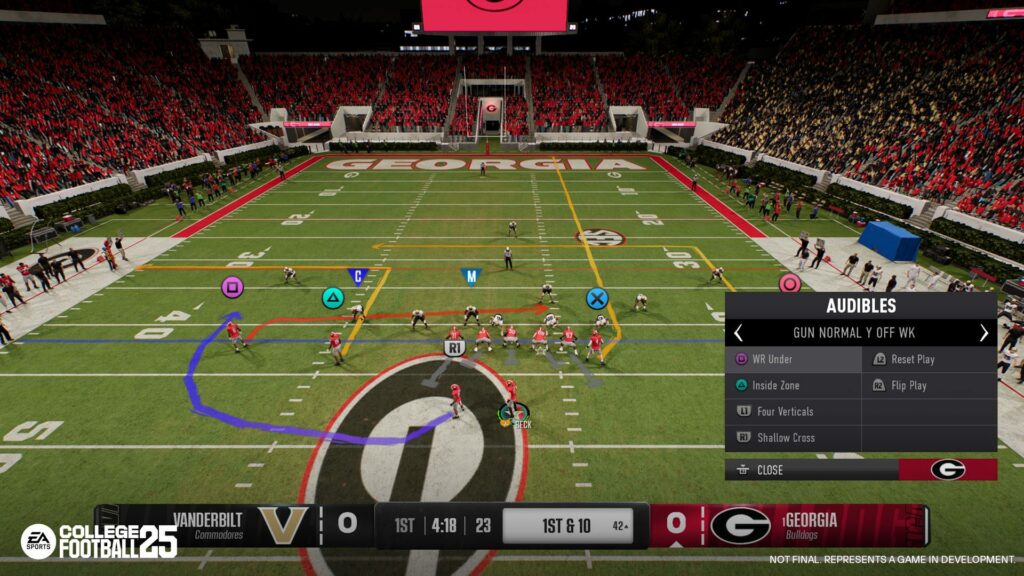When it comes to dominating the football field in NCAA 25, having a robust playbook can be the difference between victory and defeat. The right plays can turn a promising game into a resounding success, allowing players to showcase their skills effectively. This comprehensive guide will delve into the best NCAA 25 playbook, helping coaches and players alike to navigate the complexities of gameplay and strategy.
In NCAA 25, the intricacies of the playbook can be overwhelming, yet they are essential for crafting a winning strategy. Every play, from offensive formations to defensive maneuvers, must be meticulously planned and executed. By understanding which plays work best for different situations, teams can harness their strengths and exploit their opponents' weaknesses.
With this guide, we will explore the best NCAA 25 playbook options, including innovative formations, effective strategies, and tips for maximizing gameplay. Whether you are a seasoned coach or a player eager to improve your skills, this article aims to provide valuable insights that can elevate your game to new heights.
What Makes a Great Playbook in NCAA 25?
A great playbook in NCAA 25 is characterized by a variety of plays that cater to different situations on the field. Here are some essential elements:
- Diversity: Incorporating a wide range of plays ensures that teams are not predictable.
- Adaptability: The playbook should allow for adjustments based on the game situation and the opponent's strengths.
- Player Strengths: Utilizing plays that highlight the team's talent can significantly enhance performance.
- Situational Awareness: Having specific plays for crucial moments, such as fourth downs or red-zone situations, is vital.
Which Playbook Features Should You Prioritize?
When selecting the best NCAA 25 playbook, consider the following features:
- Formation Variety: Ensure that the playbook includes multiple formations to keep the defense guessing.
- Passing and Running Balance: A successful playbook should have a balanced approach to both passing and rushing plays.
- Special Teams Plays: Don't overlook the importance of kickoffs, punts, and field goals in your strategy.
- Defensive Schemes: A strong defense is just as important as a potent offense, so include various defensive plays.
How Can You Customize Your Playbook?
Customization is key to creating a successful NCAA 25 playbook. Here are some steps to consider:
- Analyze Player Skills: Assess the strengths and weaknesses of your players before selecting plays.
- Incorporate Feedback: Regularly gather input from players about which plays work best in practice.
- Test Different Strategies: Run scrimmages to see how various plays perform against live opposition.
- Stay Updated: Keep an eye on gameplay trends and adjust your playbook accordingly.
What Are the Most Effective Offensive Plays?
Offensive plays are crucial for scoring. Here are some of the most effective ones to include in your best NCAA 25 playbook:
- Spread Offense: A popular choice that uses the entire field to create mismatches.
- Zone Read: A versatile play that allows the quarterback to make decisions based on the defense's alignment.
- Play Action: This play fakes a run to draw in defenders, creating opportunities for passes downfield.
- Screen Pass: A quick pass to a running back or wide receiver behind the line of scrimmage can catch defenses off-guard.
What Defensive Strategies Should You Implement?
A strong defense can thwart even the best offenses. Consider these defensive strategies for your playbook:
- Cover 2 Defense: This strategy provides solid coverage against deep passes while supporting run defense.
- Blitz Packages: Aggressive blitzing can pressure the quarterback and disrupt the offensive rhythm.
- Zone Coverage: This allows defenders to cover specific areas of the field rather than individual players, creating opportunities for interceptions.
- Man-to-Man Coverage: Assigning defenders to specific offensive players can neutralize key threats.
How to Evaluate the Success of Your Playbook?
After implementing your best NCAA 25 playbook, it's crucial to evaluate its effectiveness. Here are some key performance indicators:
- Win-Loss Record: Track your team's performance in games to gauge the overall success of your playbook.
- Player Feedback: Regularly gather input from players about the effectiveness and ease of use of the plays.
- Statistical Analysis: Analyze key game statistics, such as yards gained, turnovers, and time of possession.
- Adjustments Made: Keep track of how often you adjust plays mid-game and their impact on the outcome.
Conclusion: What Is the Best NCAA 25 Playbook for You?
Ultimately, the best NCAA 25 playbook is one that aligns with your team's strengths, adapts to your opponents, and evolves throughout the season. By focusing on the diverse elements discussed in this article, you can create a comprehensive playbook that maximizes your chances of success. Whether your focus is on innovative offensive plays or robust defensive strategies, the key is to remain flexible and responsive to the dynamics of the game.
As you embark on your journey to build the best NCAA 25 playbook, remember to keep learning, experimenting, and refining your strategies. The path to victory lies in preparation, execution, and the relentless pursuit of excellence on the field.



